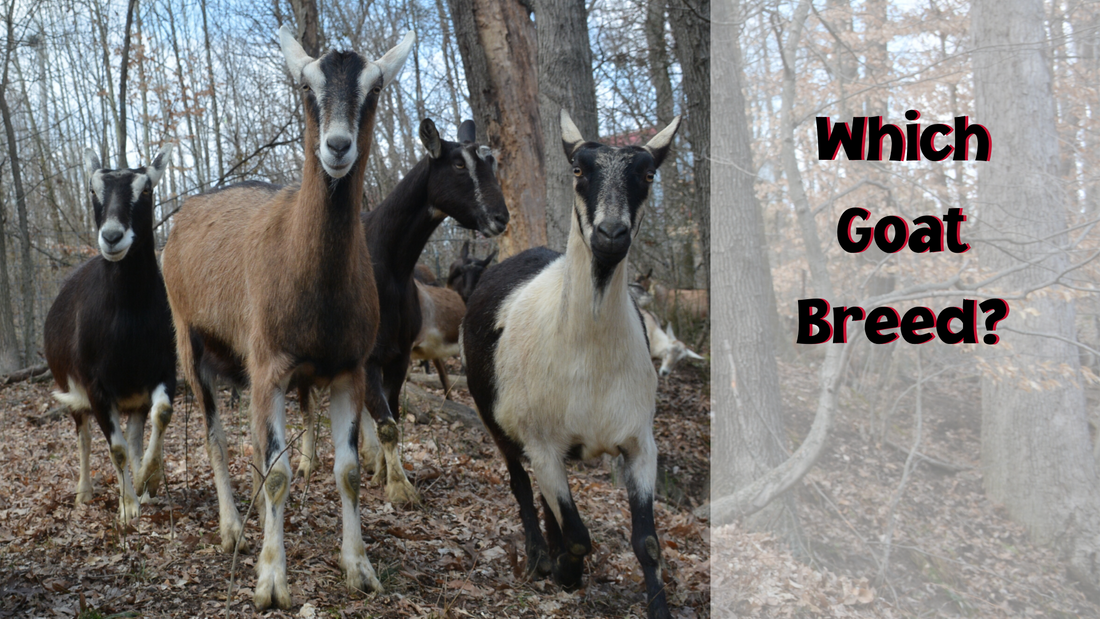
Which Goat Breed?
Share

There are three types of goats - dairy goats, meat goats, and fiber goats. Since Goat Milk Stuff is a dairy farm, this article focuses on the dairy breeds. The common registered dairy goat breeds in the United States are:
- Alpine
- LaMancha
- Nigerian Dwarf (miniature dairy goat)
- Nubian (dual purpose milk and meat)
- Oberhasli
- Saanen (Sable goats are colored Saanens)
- Toggenburg
There are also goats that don't fall into any of these breed standards and are "Grade" or mixed goats.
Here at Goat Milk Stuff, we currently raise Alpine dairy goats. Early in our goat career we also started with LaManchas, Nigerian Dwarves, Nubians, and Sannens. We settled on Alpines as our main goat breed for several reasons.
Temperament.
Alpines as a whole have wonderful temperaments. They are curious and friendly. They have great personalities and learn to answer to their names. While some of them may be stubborn, that doesn't characterize the breed as a whole.

Noise.
Alpine dairy goats are generally very quiet. Of course, they'll be noisy if you are late while feeding or milking them, but they're not screamers (like many of the Nubians we had when we first started in goats). This is important for both my sanity and our friendship with our neighbors.
Colors.
I love the fact that alpines come in a variety of color patterns. This is important because it helps to be able to identify goats that are out in the pasture. If I see a goat that is not acting right, I can tell one of the boys to check that goat by name. If the goats were all the same color (such as with Saanens, Toggenburgs, and Oberhaslis), that would be more difficult.

But while that is important, I mostly enjoy it because I love seeing newborn baby goats and finding out what color they are and if they're a doeling or buckling. It makes kidding season even more exciting when you don't know what colors you're going to get. It's especially fun when you have flashy baby goats with spots or belts born.
Overall, the colors don't affect the health of the herd or how much milk they give. But I love looking at all my goats and all their different colors. It makes me very happy!
Milk Volume.
Alpines as a breed are very high milkers. If I'm going to take care of a goat and all that entails - feeding, shots, cleaning, hooves - I want as much milk as I can get out of that goat. All goats are individuals and there are high producing and low producing animals in each breed. But my Alpines have great genetics and our best goats will give over 2 gallons a day at their peak.
Ears.
This is another silly reason I like Alpines, but I find their ears so expressive. You can often tell what kind of mood an Alpine is in by how she holds her ears. You can 't do this with the floppy ears of a Nubian or the nonexistent ears of a LaMancha. The ears on Zoe are telling me that she's thinking, "Whatcha doin? Got any food for me?"
Those are the reasons we chose Alpines as a breed. But I wouldn't have gone with Alpines, if I hadn't found an Alpine breeder that I trusted to be CAE free and have good genetics to begin our herd.
Remember, while most goat people have a favorite breed and have their own reasons for choosing that breed, there are other reasons that go into determining what is the best goat for you to get.

12/16/17 Update: We now also raise Nigerian Dwarf Goats so that we can have baby goats born year round for the Baby Goat Experience and for winter milk.
